Peter Ireland – 30 October, 2016
Free of the need to impress an audience much wider than their tutors, these students have opted to present bodies of work grounded in their personal experience - rather than dreaming up some grand scheme replete with self-conscious conceptual ambition and artist statements weighed down by current jargon. It's refreshing to read short, direct and relevant background statements.
Wellington
George Staniland / Anna Cotterill / Essi Airisniemi
In a southern field / Take Care on the Road, Love / Currents
21 October - 25 October 2016
It’s assessment time at Massey University in Wellington, and photography and other media students mount exhibitions as part of the requirements for gaining their degrees - hence the short time-span of this matrix of three. What lifts them way above average student outings is their synchronicity, their singular individual quality and what they may represent in terms of current photographic practice.
Free of the need to impress an audience much wider than their tutors, these students have opted to present bodies of work grounded in their personal experience - rather than dreaming up some grand scheme replete with self-conscious conceptual ambition and artist statements weighed down by current jargon (1). It’s refreshing to read short, direct and relevant background statements, and in this case they’re all worth quoting in full.
George Staniland prefaces his with a slightly enigmatic statement, but never mind. Perhaps it addresses the undoubted poet in him.
From my parent’s [sic] bedroom a window opens to the roof above the porch, it faces west, a thick linoleum surface, soft in the evening light. I photograph the setting sun from there, alone, and happy to keep it.
This series was born out of the desire to continue photographing in my most comfortable state; a project was constructed that allowed me to travel. I drove the country, North Island then South, making images that considered their place in relation to New Zealand identity but also, on a more basic level, responded to things that I found. Post-trip, these images alongside some taken outside the project were shaped into the series you see here; they represent my experiences within the New Zealand landscape. This is a sample of my taste, and of my photographic inclinations.
For a millennial such as Staniland the concept of “New Zealand identity” and, too, his own “photographic inclinations” have been shaped by the work of photographers of earlier generations here such as Robin Morrison and Derek Henderson. Staniland’s Otira (2) could be mistaken for a Morrison, and his Back Street in Wairoa and My Family at the Orari River likewise Hendersons. Even his wonderful Whakapapa Ski Field could easily be attributed to Peter Evans for its sharp observation, economy of means and fine wit. This is not to suggest the student comes with a template though, because collectively the ten images in the show (made over three years) reveal a consistently individual photographic response to “landscape”. He even manages to make a well-worn image of Aoraki/Mt Cook look interesting.
Two of the photographs place a figure “in” the landscape: My Uncle in Castle Hill and Jonathon in a Field. The former takes a few seconds to locate because it’s dwarfed by one of those exposed stone monoliths which give this area in high country Canterbury its name, the geographic feature in this case a reminder of an earlier photographer’s grappling with New Zealand’s landscape, John Kinder’s Kotanui Rock of 1868. That too uses human staffage to indicate relative scale, and even if Staniland is unaware of this reference - and perhaps especially so - it’s a tribute to the longevity of traditional practices surrounding the depiction of human interactions with the environment.
The figure of Jonathon stands centre-stage in the middle distance of a vast empty landscape (it feels like Central Otago), a trope of the Sublime, suggesting the smallness of Man in the presence of Nature. Despite the very contemporary look of Staniland’s work the images are underpinned by ideas going back to the Romantic movement - which is not to say his photographs are unworthy of attention because of some hackneyed element. They are worth looking at and, indeed, capable of sustained and rewarding attention.
The Romantic movement has a lot to answer for. A key development in Western consciousness and formative in expectations of what art should do, it remains a seam within the practice of photography - a medium whose first base was a commitment to the style of realism - a seam involving unique artist authorship, exploring extremes, and a psychological construction of self. Anna Cotterill’s artist statement demonstrates this almost perfectly.
‘Take Care on the Road, Love’ investigates the road trip as a time for self discovery and pushing personal boundaries both physically and mentally. I ventured on a two week solo road-trip as a reaction to the under representation of femininity and womanhood in road trip photography. With only the camera as a companion, I observed both myself and my surrounds, wondering about genders [sic] role and influence in the experience. My intention of this road-trip was to free myself of the caution and fear that my femininity entails but found once I was there that it was harder to shake than expected. The resulting body of work reflectsmy feelings of ambivalence towards the freedom, uncertainty and isolation while also contributing to an increasing visibility of female narratives; creating a more diverse and less gendered representation of lived experiences.
Cotterill’s journey - both geographic and personal - is more complex than Staniland’s, and her conceptual base shows through the images in a more self-conscious way, especially when her physical self is part of the subject matter. Here she often seems to be rather earnestly playing a role in a drama that lacks a very clear script - a sort of waif doing Cindy Sherman - the discrete images being more tableaux illustrating an idea than frames in any comprehensible narrative suggesting more. Of course, it’s a big ask expecting a graduating student to have the conceptual skills and artistic experience to pull off what’s she’s aimed at in her artist statement, but saluting her brave attempt is definitely warranted.
Cotterill’s sixteen-image installation is a mix of three print sizes: large, medium and small, arranged in two large, random-like sequences on the walls. The subject matter varies, the diaristic notes of a traveller unusually attuned to detail and aware of formal possibilities. The images less subject to her project and more open to her unprocessed responses to the environments she’s passing through seem, perhaps perversely, to convey more of her mission than the posed portraits. The exception is no.9, where she depicts herself resting - or asleep - probably in early morning light, with the fogged-up windows of her car allowing only a vague idea where she might be. This image may not signal the success of her project but it memorably justifies the rightness of her quest.
Rather like pilgrims of old - those to Jerusalem, Rome or Santiago de Compostela - both young photographers, in their different ways, have attempted to discover something of their inner selves and the relation of that self to this place by traversing a landscape. Before the Romantic movement the landscape was merely the site of contemplation: during the movement it became the subject of contemplation, Nature supplanting a notion of God as the source of all being and goodness, which prefigured the advent of the environmental movement in the mid-twentieth century.
Another advent in the 18th century was a sudden advance in the rise of scientific method as a way of explaining the physical world, and in a sense it was the exact antithesis of the extremes of the Romantic movement: careful observation and classification as against the wild speculations of artists and writers. Geographic exploration went hand in hand with science, and there arose in consequence a style of topographical visual description - more “land” than “landscape” - which delineated the physical facts of coastlines and mountain ranges. In New Zealand’s European history one has only to compare the topographic records of Abel Tasman’s artists in 1642 with those of Cook’s from 1769 on to see just how the new science was shaping this method of depiction, one still respected over half a century later when Charles Heaphy was describing in watercolours coastal profiles for the New Zealand Company around 1842.
Twenty years later, surveyor John Buchanan was continuing this tradition in pursuing his topographic work in eastern Otago and Southland, including his now most famous image Milford Sound looking north-west from Freshwater Basin. In Romantic movement terms such images were plainly lacking any overt artistic qualities, but the supplanting Modernist movement saw things differently. The formal qualities and perceived honesty of such images suddenly became valued (3), and later artists such as McCahon acknowledged a lineage from Heaphy and Buchanan rather than from Gully and Hoyte.
Where does photography feature in these historical transitions? First up, its advent soon largely killed off the topographical tradition, the needs of exact delineation being met by the camera more successfully than drawing and painting. Secondly, topographical depiction was originally treated as a form of “mere” documenting and hence outside the realms of art. While Modernism and its aftermath have adjusted to accepting as art the documentary projects of the likes of Buchanan and Heaphy, the same largesse has not yet been extended to the documentary tradition of photography. Hence the invented category of “art photography” to both maintain a redundant distinction and guarantee its continued exclusion.
The topographical documentary has been making inroads, though, even if still “contaminated” by echoes of the Romantic movement; the classic road trip - from Robert Frank’s “finding” America in the 1950s, through Robin Morrison’s plumbing a New Zealand “identity” here in the 1970s, to these two students now (4) - being the vehicle for such personal discoveries. While the art world may still gag on the documentary tradition generally, that barometer of taste, the auction system, is able to accommodate in the art section of its glossy catalogues the work of photographers such as Morrison, Aberhart and Henderson and not consign them to sections featuring ceramic pipes from the Luke Adams pottery. Small victories should be saluted too.
The third Massey student, Essi Airisniemi, contributes a three-minute video entitled Currents which is spread over three vertical screens hung from ceiling to floor so that the one to the left acts as a foreground, the centre on a middle-ground and the one to the right a background, “splitting” the projected image which is nonetheless a coherent one as long as you stand in exactly the right spot to view it.
Her artist statement thus: ‘Currents’ is a three-minute video installation exploring how we place ourselves in the changing landscape and how we perceive the natural environment physically and through technology.
The imagery draws inspiration from personal and collected experiences and has been influenced by different recording methods. The resulting series of moving image sequences presents a poetic observation of forms, colours, repetition and scale.
Removing traces of a specific place leave space for viewer’s [sic] personal remembrance and curiosity. Extended in space, the fragmented image and sound create a location for new sensory experiences.
The actual work pretty much succinctly and sparely fits the bill, its sometimes abstracted imagery and range of minimalist accompanying sounds - birdsong, crashing surf and eerie wind - more than adequately realising the artist’s intentions and conveying powerfully the dynamic and literally awesome forces of nature.
Peter Ireland
(1) Massey seems to have some sort of attraction to such labelling. Too often their students can be identified solely by the ultimately meaningless puffery of the artist statements, designed to impress their readers, but guaranteed to mystify and very often annoy them. No one goes out wanting to read pretentious, ill thought-out and badly written sermons desperate for some kind of relevance.
(2) Spelt “Otria” in the catalogue. It seems reasonable to expect that tertiary students at this level could spell or know the place of apostrophes in relation to plural nouns.
(3) Buchanan’s Milford Sound was first treated as art by its inclusion in E H McCormick’s seminal Letters and Art in New Zealand, part of 1940’s Centennial Survey series. By 1971 it had upgraded to use as the cover image for Gil Docking’s Two Hundred Years of New Zealand Painting.
(4) This phenomenon is covered in my ‘Making a Case: Derek Henderson’s Terrible Boredom of Paradise,’ Art New Zealand 121 Summer 2006/07, pp 68-71, 91.
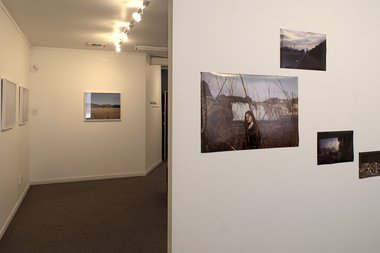
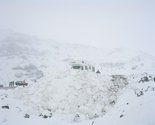
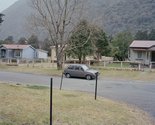
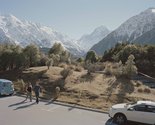
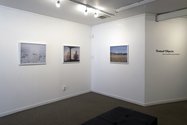
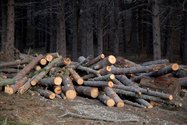
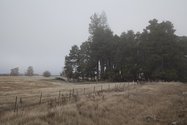
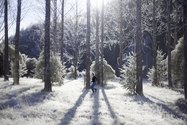
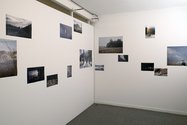
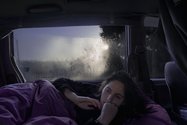

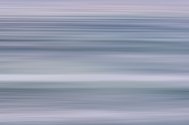

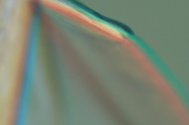
 Advertising in this column
Advertising in this column Two Rooms presents a program of residencies and projects
Two Rooms presents a program of residencies and projects



This Discussion has 0 comments.
Comment
Participate
Register to Participate.
Sign in
Sign in to an existing account.